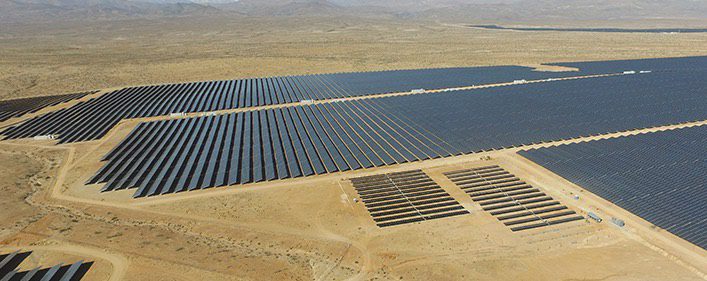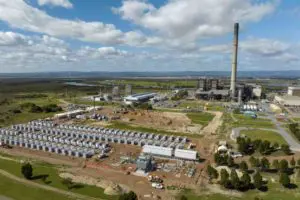Big gigawatt-scale solar PV projects planned for China’s Gobi Desert and other arid regions could have significant positive climate impacts such as reducing evaporation and wind speeds, according to Chinese scientists.
A number of large-scale solar PV projects are already planned to be built in China’s massive Gobi Desert and other arid regions.
The first of these projects, a 1GW solar farm in the Tengger Desert in the Ningxia Hui autonomous region, was brought online at the end of April and is expected to generate 1.8 billion kilowatt-hours each year, equivalent to the power demand of 1.5 million households.
However, researchers from the National Climate Centre of China Meteorological Administration (CMA) in Beijing have also determined that such large-scale PV projects could result in positive change in the region.
Specifically, the researchers believe that projected solar PV deployment in China’s desert regions could lead to not only lower carbon emissions, but also favourable climate effects such as lower evaporation and wind speeds.
The findings were published in a recent study in the journal Solar Energy. According to the scientists, the PV-induced climate effects could contribute significantly to improving ecological conditions in the Gobi Deserts.
Moreover, the scientists believe that the local climate impacts could be equivalent to, if not stronger, than those caused by climate change.
The study, “Projected PV plants in China’s Gobi Deserts would result in lower evaporation and wind”, quantitatively compared the climate effects of solar parks in the Gobi Deserts under various emission scenarios – the first such comparison conducted between PV-induced climate effects and projected climate variability.
Researchers simulated the impact of planned solar PV plants using a newly developed Weather Research and Forecasting (WRF) alongside the Coupled Model Intercomparison Project Phase 6 (CMIP6) projection models.
The WRF model is a numerical weather prediction system used for weather forecasting and atmospheric research, while CMIP6 is used for climate projections and is commonly used to understand historical, present, and future climate changes.
While the full study is available to read under a Creative Commons license, the ultimate conclusions of the study are good news for the environmental stability of China’s massive desert regions such as the Gobi Deserts.
Solar PV-induced climate effects would be predominantly local to the PV plant regions, but would nevertheless “favour higher relative humidity, lower evaporation and wind speed under current and future climate scenarios.”
These local climate effects would be “approximately equivalent to or even stronger than the projected climate variability, especially over the PV plant regions” and “would contribute to improving ecological conditions,” confirming separate research highlighting the vigorous growth of vegetation at solar PV plants built in dry climates.
“Thus,” the researchers conclude, “the deployment of the PV plants not only reduce carbon emissions, but also create new environmental benefits through changes in the near-surface climate, especially in Gobi Deserts.”










